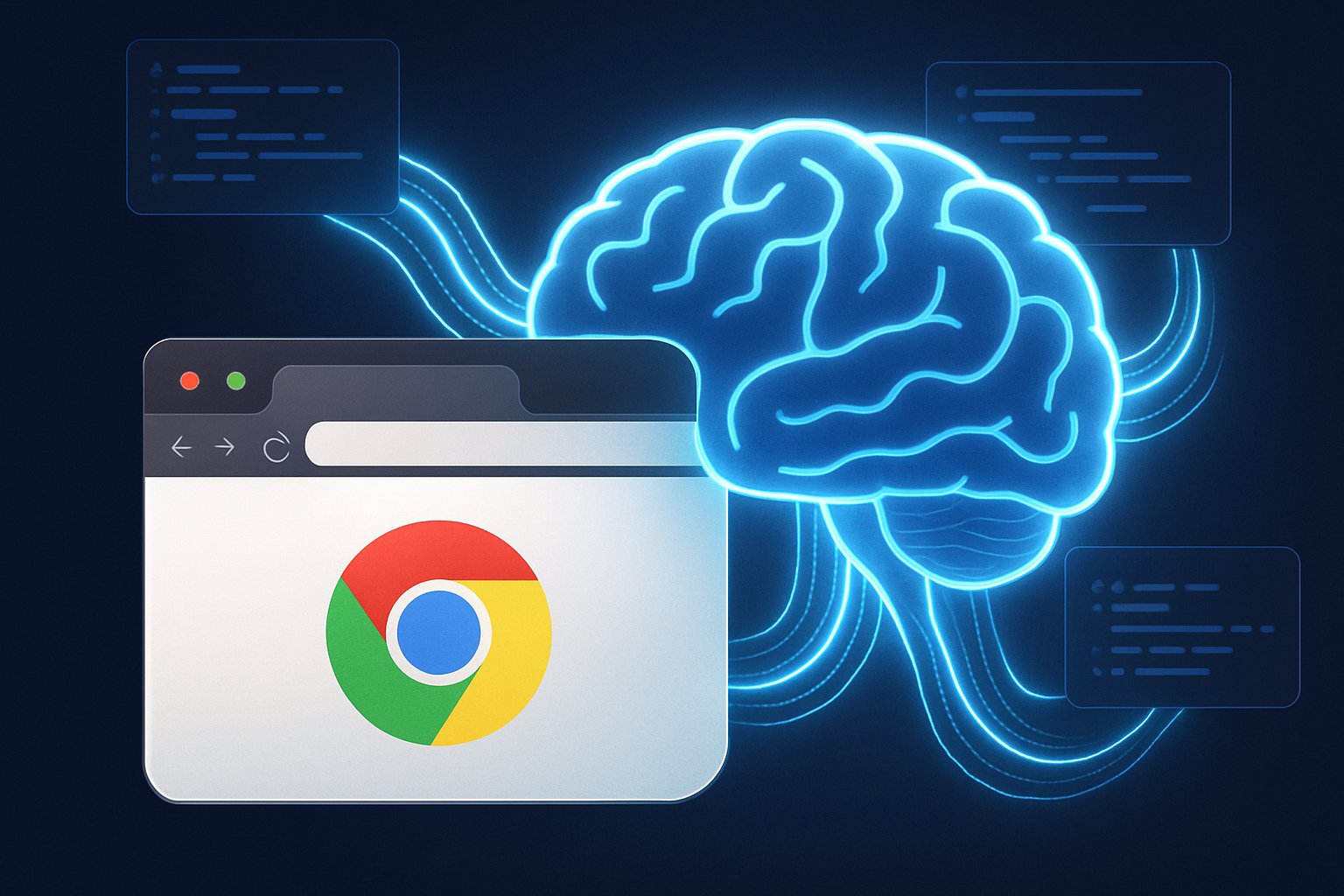
AI CERTS
5 hours ago
Chrome Canary Drives Browser AI Integration for Developers
Gemini Arrives In Chrome
Google began shipping the AI assistance panel in Canary build 131. Additionally, Ask AI buttons now sit inside Elements, Sources, Network, and Performance tabs. When a developer selects a DOM node, Gemini explains style conflicts, suggests new rules, and previews edits live. Furthermore, large-context models turn dense performance traces into actionable tips about LCP or layout shift. Google VP Mike Torres called the release “the biggest upgrade in Chrome history.” StatCounter shows Chrome holding roughly 66 percent desktop share, so impact will be wide.

These integrations exemplify browser AI integration at the tooling layer. Therefore, many task flows once handled in external chats now occur beside the inspected page.
Summary: Canary exposes Gemini across core panels. Developers gain instant, context-aware suggestions. However, the journey has just started, leading to broader workflow changes.
Next, we examine those workflow shifts in depth.
Developer Workflow Overhaul Guide
Daily debugging often jumps from IDE to terminal to browser. Now, Gemini stitches those hops together. For example, the open-source Gemini CLI lets engineers query the same model from a terminal shell, then continue inside DevTools. Consequently, the emerging pattern forms an AI workspace evolution that erases friction. Developers can even upload Nano Banana images to the chat when diagnosing rendering issues, receiving CSS that aligns colors with branding palettes.
Additionally, workspace mapping allows Gemini to save accepted changes directly into local files. That round-trip previously required manual copy-paste. Such automation yields clear productivity enhancement, especially during sprint crunches.
- 60 requests per minute: free Gemini CLI preview quota
- 1M-token context window: Gemini 2.5 Pro capacity
- 18-month data retention policy in DevTools
Summary: Gemini closes IDE, terminal, and browser gaps. The unified surface accelerates edits and reviews. Nevertheless, privacy and governance still demand scrutiny.
Accordingly, the next section addresses those concerns.
Privacy And Governance Concerns
DevTools documentation states that inspected page data may undergo human review. Moreover, it can remain on Google servers for up to 18 months. Enterprise administrators can disable the feature, yet many teams fail to adjust policies promptly. In contrast, on-device Gemini Nano promises reduced leakage, although not all tasks qualify for local inference. Independent Deep Search research groups therefore urge clear architectural disclosures.
Furthermore, sensitive customer dashboards often include proprietary visuals. Uploading Nano Banana images of such dashboards could breach contractual terms. Consequently, developers must weigh convenience against compliance.
Summary: Data flows extend beyond local machines. Governance frameworks must adapt quickly. However, competitive dynamics also influence adoption decisions.
The next section explores those competitive forces.
Competitive Browser Landscape Shifts
Microsoft embeds Copilot into Edge while Anthropic courts IDE vendors. Nevertheless, Chrome’s share gives Google leverage. Embedding Gemini deepens browser AI integration and may lock workflows into Google’s stack. Moreover, competing vendors fear reduced extension visibility if agentic browsing centralizes decisions within Gemini.
Community voices highlight potential antitrust flashpoints. Meanwhile, AI workspace evolution stories dominate dev-focused podcasts. Some hosts note that uploading Nano Banana images to Edge Copilot yields similar CSS suggestions, although not workspace saves. Therefore, parity race accelerates.
Summary: Competition spurs rapid innovation yet raises lock-in worries. Developers should stay tool-agnostic where possible. Next, we evaluate first-hand user impressions.
Developer feedback provides vital context, which we review now.
Hands-On Early Feedback Notes
Bloggers on Dev.to praise instant CSS fixes generated by Gemini. Conversely, Reddit threads report hallucinated performance advice that mislabels render-blocking scripts. Additionally, some testers observe slower first replies when large Nano Banana images accompany prompts. Nevertheless, most users agree on noticeable productivity enhancement during trivial bug hunts.
Several engineers conducted their own Deep Search research, capturing network traffic while chatting with Gemini. They confirmed metadata uploads but found no full HTML dumps when local inference sufficed. Consequently, trust grows incrementally as transparency improves.
Summary: Early adopters see mixed but improving results. Review diligence remains essential. Subsequent roadmap signals hint at stronger agentic capabilities.
We now investigate those future plans.
Future Roadmap And Risks
Google’s Project Mariner will enable multi-step browser agents that fill forms and navigate sites. Furthermore, the Model Context Protocol aims to feed richer context into Gemini safely. Such milestones deepen browser AI integration yet amplify governance stakes. Meanwhile, OpenAI and Microsoft push similar agents, intensifying time-to-market pressure.
Potential risks include escalating dependency on proprietary APIs and model drift causing regressions. Additionally, critics warn of scenario creep where agents submit confidential worksheets or Nano Banana images without explicit consent. Thorough Deep Search research audits are planned by several security firms.
Summary: The roadmap promises broader automation. Equally, it introduces new operational hazards. Nonetheless, developers can prepare through targeted learning paths.
Certification options are discussed in the next section.
Certification Pathways Forward Now
Many engineers want credentials validating AI tooling fluency. Professionals can enhance their expertise with the AI Developer™ certification. Moreover, the syllabus covers prompt design, AI workspace evolution, and DevTools automation. Completing the program reinforces safe browser AI integration practices and drives measurable productivity enhancement.
Several modules include labs that manipulate Nano Banana images and run comparative Deep Search research. Consequently, graduates gain hands-on confidence across Gemini CLI, Code Assist, and in-browser panels.
Summary: Structured learning bridges knowledge gaps quickly. Certified developers position themselves for agent-powered roles. Finally, we recap the core insights and recommend next steps.
Our conclusion consolidates these findings.
Google’s Gemini rollout signals a decisive leap for browser AI integration. Consequently, developers can debug, analyze, and edit without leaving DevTools. However, data retention policies and model fallibility demand continued vigilance. Competitive pressure from Microsoft, Anthropic, and emerging startups will accelerate feature parity. Meanwhile, structured upskilling through certifications sharpens individual readiness. Therefore, review privacy settings, test workflows thoroughly, and pursue credentials that validate mastery. Act today to stay ahead in this rapidly evolving AI tooling era.



